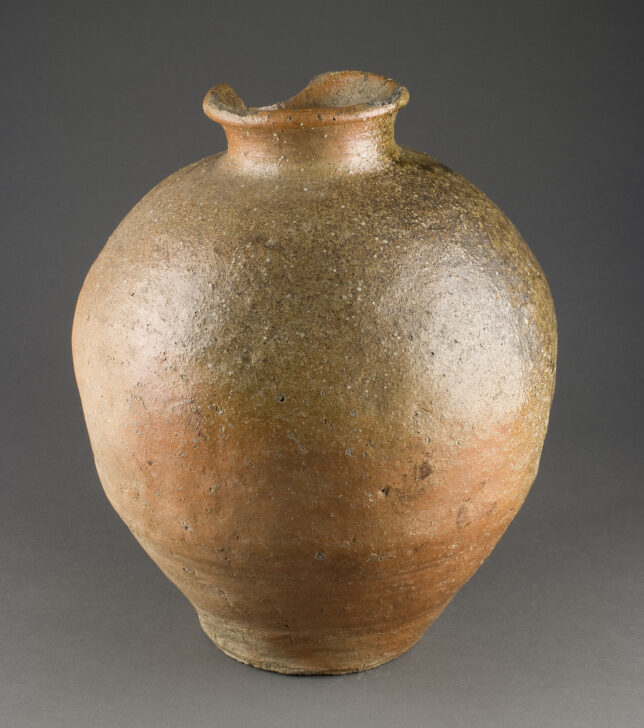Shigaraki ware storage jar
Shigaraki ware, Japan

Description
Shigaraki ware can be recognized immediately by the distinctive properties of the local clay, a gritty mixture of sand, feldspar, and trace metals that fire to a deep red-brown or golden-red. The surface is speckled with white, where particles of unfused feldspar exploded in the heat of firing. The glossy green-brown glaze that drapes across the shoulder of the jar is an accident of the firing process, resulting when tree ash floating through the kiln fused with the molten surface of the clay.
Unglazed, earthy Shigaraki wares such as this storage jar were eagerly embraced by tea masters, who were drawn to their studied and deliberate rusticity and used them to store tea.
(Label for UMMA Japanese Gallery Opening Rotation, March 2009)
Subject Matter:
The jar was probably made to transport and store tea leaves in response to growing popularity of the tea ceremony among merchants and warriors in the sixteenth century. Naturally glazed and imperfected, unpretentious appearance of Shigaraki wares were suited to the tea aesthetic of "wabi-sabi" (genteel frugality and rustiness), the ideal which rooted in Zen Buddhism.
Physical Description:
A large storage jar with round shoulder and shorter neck. The body is rather unevenly potted, showing bumps in some parts. The surface texture is uneven with speckles of white particles. Dark green, natural ash glaze drips on one side of the jar from top of the neck to the lower middle of the body. The rim of the neck is partially chipped and cracked. It has no foot.
Usage Rights:
If you are interested in using an image for a publication, please visit https://umma.umich.edu/request-image/ for more information and to fill out the online Image Rights and Reproductions Request Form.